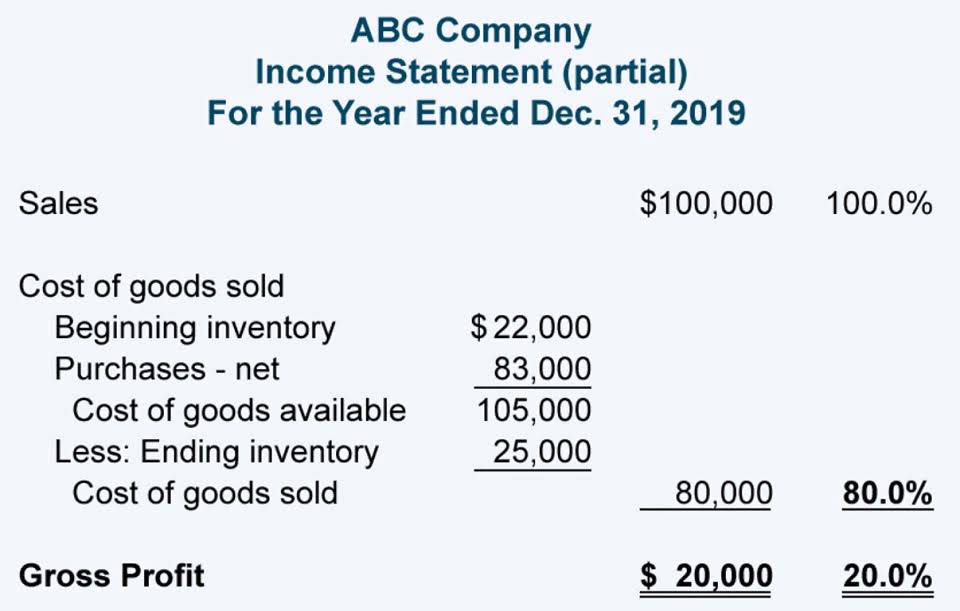
The monetary value of the inventory at the beginning of the accounting period. The FIFO (“First-In, First-Out”) method means that the cost of a company’s oldest inventory is used in the COGS (Cost of Goods Sold) calculation. LIFO (“Last-In, First-Out”) means that the cost of a company’s most recent inventory is used instead. Suppose the number of units from the most recent purchase been lower, say 20 units.

FIFO: Periodic Vs. Perpetual
Whether you are a business owner, financial analyst, or a student learning about inventory management, this tool serves as an invaluable resource to optimize your operations or studies. Experience the ease and accuracy of our FIFO Calculator for Inventory today. This powerful tool, developed by Newtum, serves as an essential resource to streamline and improve your inventory management. Dive in to discover how it can save you time and money while ensuring accurate inventory costs. The Sterling example computes inventory valuation for a retailer, and this accounting process also applies to manufacturers and wholesalers (distributors). The costs included Grocery Store Accounting for manufacturers, however, are different from the costs for retailers and wholesalers.

Why is choosing a method of inventory valuation important?
FIFO means “First In, First Out.” It’s an asset management and valuation method in which older inventory is moved out before new inventory comes in. It means that you have sold the equivalent of your average inventory twice during the accounting period. As with FIFO, if the price to acquire the products in inventory fluctuates during the specific time period you are calculating COGS for, that has to be taken into account. Using both the FIFO and LIFO methods will allow you to streamline your inventory management seamlessly.

Is a Debit Card Considered Cash in Accounting and Finance?
- Accountants use “inventoriable costs” to define all expenses required to obtain inventory and prepare the items for sale.
- Many businesses use inventory management systems to track purchase dates and quantities.
- Her areas of expertise include accounting system and enterprise resource planning implementations, as well as accounting business process improvement and workflow design.
- This can benefit early businesses looking to get loans and funding from investors.
- Keeping track of all incoming and outgoing inventory costs is key to accurate inventory valuation.
Using specific inventory tracing, a business will note and record the value of every item in their inventory. Inventory value is then calculated by adding together the unique prices of every inventory unit. A higher inventory valuation can improve a brand’s balance sheets and minimize its inventory write-offs, so using FIFO can really benefit a business financially.
Specific inventory tracing is only used when all petty cash components attributable to a finished product are known. Learn more about what LIFO is and its impact on net income to decide if LIFO valuation is right for you. Inventory is valued at cost unless it is likely to be sold for a lower amount.
- LIFO is not just about cost allocation; it also integrates seamlessly with certain types of inventory flows, particularly in industries where items are perishable or become obsolete quickly.
- Meaning, you move the latest items that arrived into your inventory first.
- Overstating COGS can underreport taxable income, risking penalties, while understating it could lead to overpaying taxes.
- It’s a vital component in preparing financial reports and can significantly affect tax implications due to its influence on reported earnings.
- Choosing—and sticking to—an inventory valuation method to measure these amounts is essential in keeping tax-ready books.
- Production lines typically use components in the order they are received, especially for dated or perishable parts.
Returns Management

Their choice of inventory management/valuation method will impact the reported profitability, income taxes, and balance sheet values. In summary, the FIFO method offers clarity and efficiency in inventory management across industries. By understanding the total units and units sold, companies can gain an accurate picture of their inventory and cost of goods, allowing for informed decision-making. Given the perishable nature of agricultural products, using FIFO for ending inventory is essential.

Related tools:
Learn how to build, read, and use financial statements for your business so you can make more informed decisions. Our team is ready to learn about your business and guide you to the right solution. Since XYZ enterprise fifo method calculator is using the FIFO model of valuation, the sold 600 units shall be sourced from the units received in August. Using FIFO, the COGS would be $1,100 ($5 per unit for the original 100 units, plus 50 additional units bought for $12) and ending inventory value would be $240 (20 units x $24). Ecommerce merchants can now leverage ShipBob’s WMS (the same one that powers ShipBob’s global fulfillment network) to streamline in-house inventory management and fulfillment.